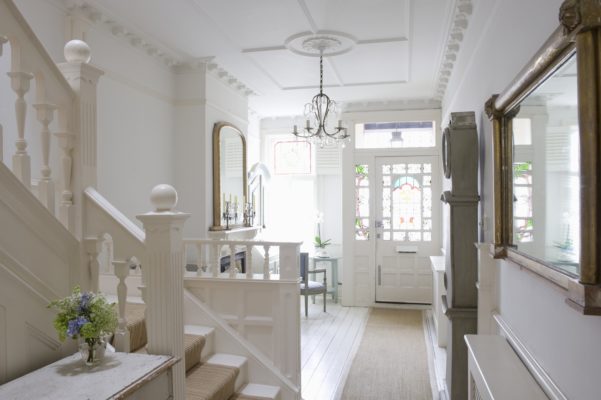Interior mouldings are one of the features of the home that serve a specific purpose without getting much recognition, and yet almost without knowing it they are integral to how we view a room and how its overall look is finished. Ceiling moulds and dado rails are perhaps more prominent in a room, but architraves are the traditional feature that hides in plain sight and can make or break the success of your interior design.

In essence, an architrave is a strip of material, usually wood, that rounds off the transition from the wall to a door or window. In practical terms an architrave hides the joint between the wall and door or window, as this joint can grow bigger over time through minor movement or shrinkage. However, an architrave is far more than just a smooth way of blending in the join. Like a skirting board does between wall and floor, an architrave adds wonderful detail, and done correctly will not just finish off a room neatly but can transform it.
Here are three ways you can design a room in a period home to really emphasise the understated characteristics of an architrave, and add the key detail that will really transform your home.
- Choose an appropriate style
Compared to contemporary houses, a period home is likely to have high ceilings and large windows, these were particularly common in Victorian times. Therefore the architrave you choose should reflect that. Victorian architraves are designed to suit this kind of house, being wider and more expansive to suit the wider wall space, and likewise Georgian architraves do the same for Georgian homes. Getting this wrong can look clumsy and mis-matched. Even if you have a new-build property with minimalist décor there are ways to add the finesse and linear detail that interior mouldings can offer by fitting contemporary architraves. Of course, in a traditional property it is important that your architraves match your ceiling moulds and dado rails.
- Be consistent
If you have architraves in one room but not another you may feel that adding them will provide a more uniform look to the home, and of course it will, but only if you are consistent from room to room. Naturally, many of us like to have different looks and themes in different rooms, but having matching architrave styles is very important for helping the flow of the house and making the transition between rooms more seamless and easy-on-the-eye. It is a common mistake to make, particularly if you have underestimated the effect and influence on the home that architraves have. You will soon notice if you have Georgian architraves in one room adjacent to another featuring Edwardian architraves, for example.
- Colour carefully
We’ll talk about painting technique shortly, but first of all you need to choose your colours carefully if you have opted to paint your architraves. It is common to have different colours for a door or window frame, compared to the architrave itself. The more pronounced this difference is, the more of a bold statement you are making and the more your architrave will stand out, so you need to decide if this is what you want. Of course there are no rules, but often, a paler shade from the same colour palate defines the architrave enough and allows you to celebrate this elegant period feature, but produce a softer finish that creates more balance in the room overall. However much of a contrast you choose, you will need to paint with a steady hand or the ornate effect of the architrave will be lost, and you will be sat staring at the wobbly lines of a bodge job forever, or as long as you can stand it. Take your time or get a professional in, because the beauty and understated influence that a well painted architrave has is often not given due attention.
Choosing appropriate designs throughout the house and applying your colours carefully will all add up to a superior transformation of the home that will make the most of this treasured period feature and bring you years of contentment in the home.
Take a look at our stunning range of traditional architraves today.

